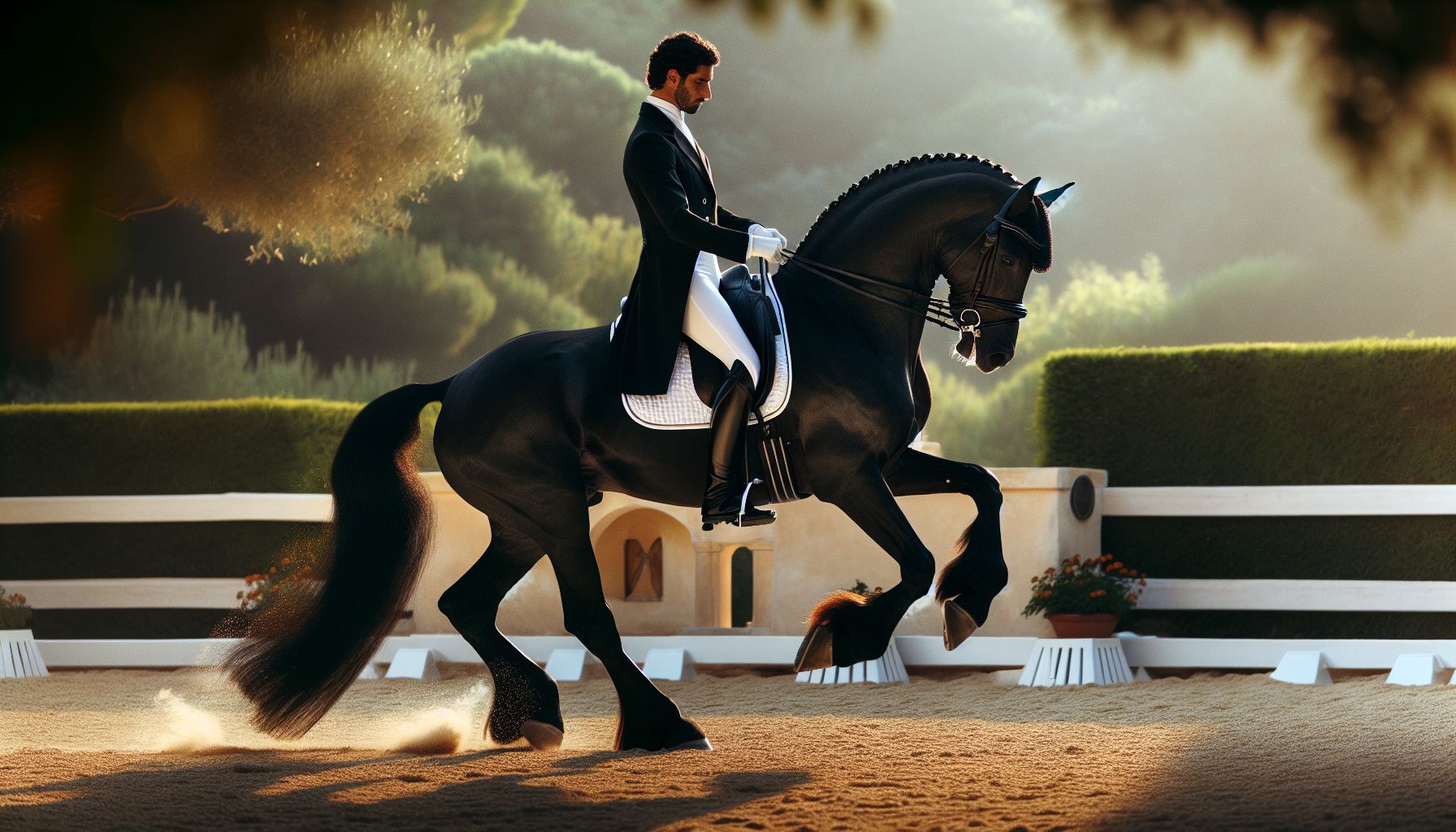Have you ever witnessed the mesmerizing sight of a horse and rider moving in total harmony? The elegant choreography, the fluid movements, the sheer beauty of it all. Welcome to the world of dressage, a centuries-old equestrian sport that combines grace, precision, and skill. Whether you’re an equestrian enthusiast or simply curious about this fascinating discipline, this blog post will introduce you to the magical world of dressage.
What is Dressage?
At its core, dressage is often referred to as “horse ballet,” and for good reason. It is a rigorous and artistic form of horse training where horse and rider work together to perform a series of predetermined movements. These movements, known as “dressage exercises,” are designed to showcase the horse’s strength, flexibility, and responsiveness to the rider’s aids.
The History of Dressage
Dating back to ancient Greece, dressage was originally developed as a method of training horses for war. Over time, it evolved into an art form as the primary purpose shifted from preparing horses for battle to presenting them as symbols of elegance and precision. Today, dressage is an Olympic sport and a testament to the long-standing bond between humans and horses.
The Training Scale: The Foundation of Dressage
At the heart of dressage lies the training scale, a hierarchical system that serves as the foundation for developing a well-rounded and highly trained equine partner. The training scale consists of six key elements:
- Rhythm: Establishing a consistent and regular pace, essential for maintaining balance and impulsion.
- Suppleness: Encouraging the horse to be flexible and have a smooth, flowing movement.
- Contact: Achieving a soft, elastic connection between the rider’s hands and the horse’s mouth.
- Impulsion: Generating a controlled and energetic forward thrust, without tension or rushing.
- Straightness: Encouraging the horse to move in a straight line, evenly distributing weight on all four legs.
- Collection: Developing the horse’s ability to engage its hindquarters and carry more weight on its haunches, resulting in increased power and agility.
Meticulously working through each element of the training scale not only enhances the horse’s physical abilities but also cultivates trust and partnership between horse and rider.
The Dressage Movements
Dressage encompasses an array of intricate movements that showcase the horse’s athleticism and obedience. From simple lateral exercises like leg-yielding and shoulder-in to more advanced maneuvers like piaffe and passage, dressage tests are meticulously designed to challenge horse and rider while highlighting their harmony and technical skill.
- Leg-Yielding: The horse moves diagonally, crossing its legs, while maintaining forward momentum.
- Shoulder-In: The horse moves with its shoulders inclined toward the inside of the arena, promoting suppleness and balance.
- Piaffe: A highly collected and elevated trot performed in place, displaying the horse’s incredible strength and suspension.
- Passage: The ultimate expression of collection, where the horse appears to “float” with exaggerated upward movement and elevated suspension.
These are just a few examples of the vast repertoire of movements within dressage. Each requires hours of training, discipline, and precision to master, making dressage a sport that demands both physical and mental prowess.
Dressage Competitions
Dressage competitions, often held in indoor arenas with meticulously groomed footing, provide a platform for riders to showcase their skills and horsemanship. Ranging from local shows to international events, competitions are structured into different levels, allowing riders to progress as they refine their abilities.
During a dressage test, riders perform a predetermined sequence of movements, which are judged on accuracy, quality of execution, and overall harmony between horse and rider. Competitors aim for high scores awarded by a panel of judges, who evaluate various aspects, including the horse’s movement, rider’s position, and overall presentation.
The Universal Appeal of Dressage
Dressage is a sport that transcends culture, language, and age. Its universal language lies in the understanding and appreciation of the harmonious partnership between horse and rider. The artistry and precision of dressage captivate audiences around the world, drawing spectators from all walks of life, united in their admiration of these majestic equine athletes.
Dressage: A Bonding Journey
Beyond the spectacle and competitive nature, dressage is also a deeply enriching experience for riders and their horses. The intricate connection between horse and rider is built through countless hours of training, patience, and dedication. Dressage fosters a unique bond, as it requires riders to listen and respond to the subtlest cues from their equine partner, resulting in a relationship based on trust, respect, and mutual understanding.
In the realm of dressage, success is measured not only by ribbons and scores but by the harmony achieved between two souls: one human, one equine.
Conclusion
Dressage is not just a sport; it is a celebration of the timeless partnership between humans and horses. From its rich history to the intricate movements and dedicated training, dressage offers a captivating journey into a world of beauty, athleticism, and mutual trust. Whether you’re an avid equestrian or a curious onlooker, the mesmerizing art of dressage promises to inspire and leave you in awe of the incredible synergy between horse and rider.
